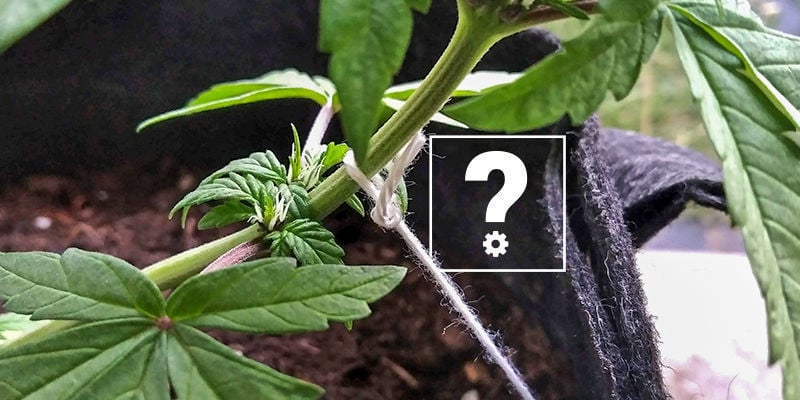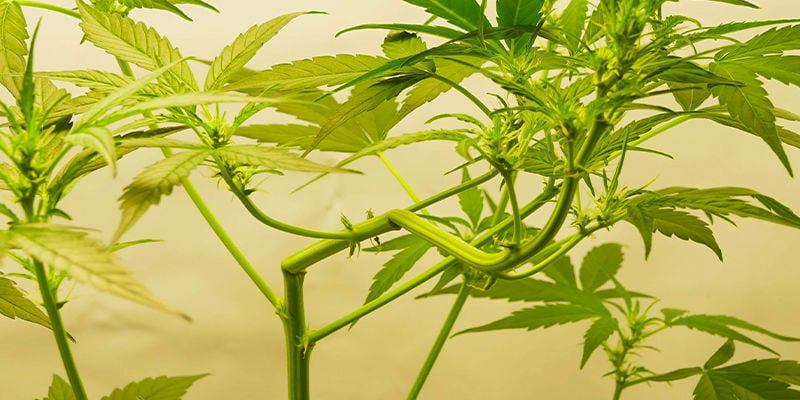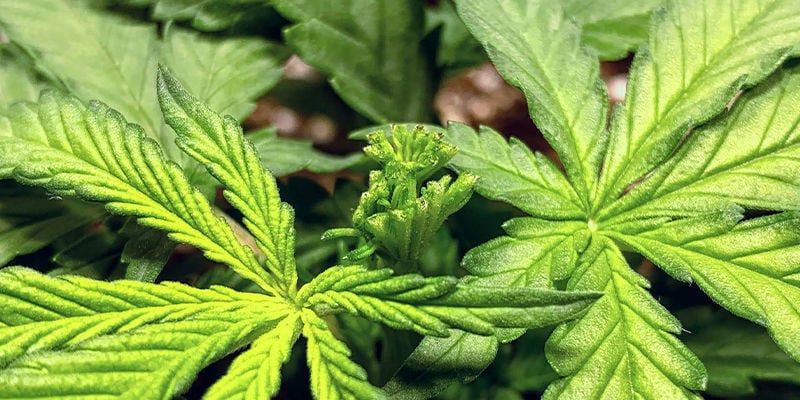How To Train Autoflowering Cannabis

In order to train autoflowering cannabis plants, you need to have a little knowledge, and a lot of care. While it's possible, it's only beneficial if you perform the right techniques, at the right time. Here's a general guide for those thinking about training their autos.
Many cannabis growers use training techniques in order to maximise yields. These techniques work in a number of ways, each seeking to encourage the plant to display vigorous growth and/or expose more of the plant to light.
However, can you train autoflowering cannabis? This is a contentious question. We think the answer is a tentative "yes". Here we look into how to train autoflowering cannabis plants to ensure that you end up increasing your yield, rather than just severely damaging your plants.
What is cannabis training?

Cannabis “training” is the general name given to a range of methods that aim to manipulate the way a plant grows; usually, these methods are employed in hopes of boosting the final yield. While modern cannabis plants are able to produce a lot of bud as long as they’re treated with care, they can produce even more if they are appropriately trained.
Generally, training is divided into two categories: low-stress training (LST) and high-stress training (HST). LST seeks to do little to no damage to plants, and often simply involves tying or bending stems and branches in certain ways to encourage a particular structure. Examples include ScrOG and the tie-down method.
HST, on the other hand, damages plants to the degree that they are forced to recover in unusual, and beneficial, ways. Examples of HST include topping, fimming, super cropping, and main-lining.
Can you train autoflowers?

Many growers say that you should not train autoflowering cannabis plants at all. However, a growing legion of auto cultivators is in favour of some forms of training, though with numerous caveats. So, why the discussion?
It all comes down to the way different varieties of cannabis move through their life cycle. Photoperiod cannabis plants will remain in the vegetative stage until indoor growers change the light cycle, or until Mother Nature deems it time outdoors. As cannabis training is chiefly performed during the vegetative phase, growers can extend this stage to allow their photoperiod plants to recover from any stress or damage inflicted by various methods. Then, once the plants have fully recovered, they can progress healthily into the flowering stage and begin to direct energy toward bud production.
This is not so with autos. Autoflowering plants progress from the veg stage into the flowering stage of their own accord—veg cannot be extended. Usually, autos veg for about 3–4 weeks before starting to bloom, which doesn’t give growers much time to train, or plants much time to recover. And the last thing you want is a damaged plant to waste energy on recovery when it should be focusing on flowering. In this way, training can indeed do more harm than good with autoflowers.
All that being said, you can indeed train autoflowers! You just have to be very careful, pick the correct methods, and time it well. There’s little room to make mistakes. Fortunately, some methods are not intensive, and don’t usually damage plants very much. Below we break down whether or not it’s worth it to train autos, and how to do so using different methods.
✅ Pros of training autos:
- Potential for multiple growth sites
- Larger yields
- Flatter canopy, meaning a more even spread of light
- Better use of grow space
❌ Cons of training autos:
- Poor technique or timing can cause damage and reduce yields
- As autos are unforgiving, it can be easy to make mistakes
How to train autoflowers: 2 methods

Now, if you’re still interested in training your autoflowering cannabis plants, here are two methods that, if executed properly, can work very well. It’s worth noting that you shouldn’t use both methods on a single plant, as it will prove too much for it.
The first method is much safer, whereas the second is more prone to cause unwanted damage. Proceed with care!
LST: tie-down method
The tie-down method is among the least invasive and damaging training techniques. As such, it is the perfect choice for beginners who want to try training their autos.
While the plant is still very young (see the section on timing below), gently bend the main stem until it is parallel to the ground. Then, using gardening wire or string, secure it. In time, the plant will learn to grow outward rather than upward. By doing so, the canopy becomes wide and flat, meaning it has a larger surface area to catch light. Ultimately, this leads to larger and more uniform bud sites, and greater yields!
HST: topping
Topping is much more intensive and, if performed poorly, can really damage a plant. Essentially, topping involves cutting off the top node of a plant, where the main bud site forms. This might sound counterproductive, but when the plant recovers, it does so with two main bud sites instead of one.
These top colas produce by far the most bud, so doubling the amount can significantly increase your harvest.
When to train autoflowers

You want to train as early as possible with autos, in order to give them maximum time to recover. Again, most auto strains begin flowering in as little as three or four weeks after germination, meaning you really have very little time.
Given that, you should start once your plant has developed around 3–4 nodes or 3–4 true leaves. Training at this point should still give your plant some time to recover.
That being said, only train weed plants that appear 100% healthy. They need to be very robust to handle the stress of HST in particular. If they are already weak, you’re more likely to kill them than increase your yield!
When is the latest you can train autoflowers?
We do not recommend training after your plant has developed its fifth node or fifth set of true leaves. After this point, auto plants will be on the fast track to the flowering stage, and won’t benefit from any unneeded stress.
Other useful training techniques for autoflowers

The tie-down method and topping are by no means the only two training methods that can be used for autos. In fact, some of those listed below may work better, especially if you have multiple plants. With each method, we’ll make clear how much stress they can cause, so you can decide whether it’s worth the risk.
SOG and ScrOG
These are two of the most popular low-stress training methods for growing weed.
SOG is pretty straightforward. Standing for “sea of green”, it simply involves growing many small plants in a small space, and treating them as a single canopy. With this method, the goal is to maximise the overall yield of the crop, not of each plant. Many small plants produce more buds than one or two big ones.
SOG causes no stress for autos, and in fact is only really a form of training when growing photoperiod plants, wherein the flowering stage is deliberately triggered while the plants are still small.
ScrOG can also be used to great effect with autos. Standing for “screen of green”, it involves placing a mesh screen above your plants for them to grow into. Once they reach it, you direct their stems and branches throughout the mesh and secure them, creating—you guessed it—a screen of green.
As with the tie-down method, this encourages outward growth and a broad canopy, maximising light uptake. If employed carefully, ScrOG should cause minimal stress to auto plants.
Fimming
Fimming is a more complex form of topping that can dramatically increase the number of main colas a cannabis plant develops. That being said, it needs to be executed perfectly in order to work. For that reason, we’d recommend not using it on autos.
To FIM, growers cut the top bud site off—not beneath it, but right in the middle. This cuts straight through the plant's developing tip, which causes it to sprout several new bud sites, if done well!
Super cropping
Super cropping is pretty brutal. It essentially involves bending and snapping branches to imitate predation. One of the reasons cannabis plants produce cannabinoids is to deter predators, so if they think they’re being preyed upon, they will produce more bountiful buds in response.
This is a very high-stress method, and, though it works very well with photoperiod plants, is probably not recommended with autos.
Training autos: It can be done!

Though it requires extra care and attention, autoflowering cannabis strains can certainly be trained. Primarily, growers must pick techniques that exert little stress, otherwise you’re more likely to do lasting damage than boost the weight and potency of your harvest.
Whichever method you opt for, be careful and get the timing right! Mistime your training, and it will all be for nothing! Now all you have to do is go and find your favourite autoflowering cannabis seeds!













 United States
United States










